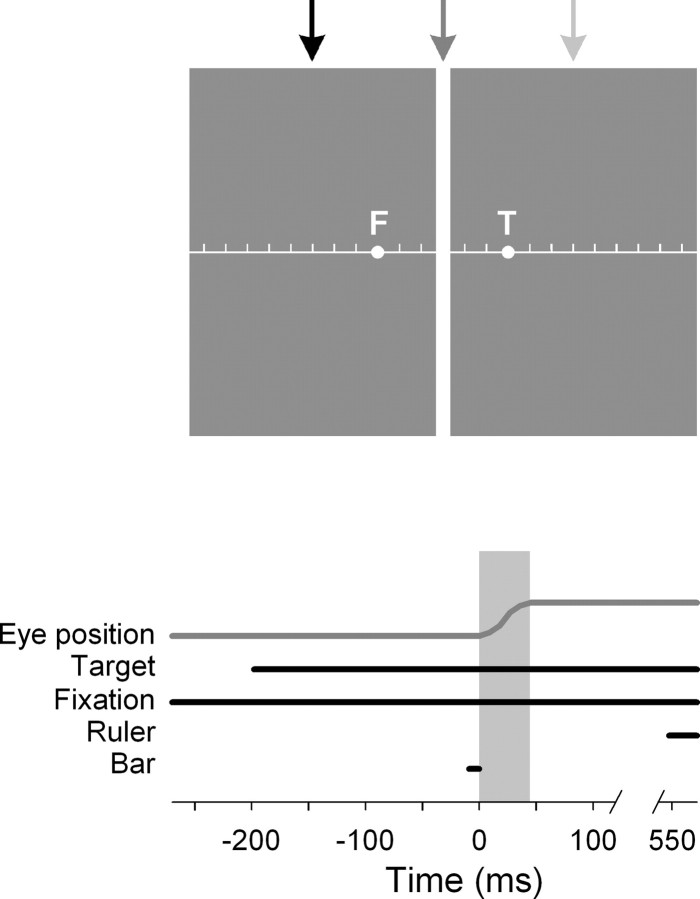Figure 1.
Top, Spatial layout of the screen. Screen background was gray and 40 × 30 cm (43.6 × 33.4° at a distance of 50 cm). An initial fixation point (F) was presented at 5° either right or left of screen center. A second stimulus, the saccade target (T), was presented at the respective mirror location. A vertical bar was flashed at either screen center (as shown here) or 10° right or −10° left of screen center, respectively (arrows mark possible locations). After saccade execution, a ruler was presented across the screen together with a mouse pointer. Bottom, Time course of experimental setup. Subjects fixated the fixation point. At a variable time, the saccade target was presented; both stimuli remained illuminated until the end of a trial. Subjects performed a saccade (gray shaded area) from the fixation point to the target stimulus. At a variable time around saccade onset, the vertical bar was flashed for 9 ms. A ruler was switched on 750 ms after target onset.

